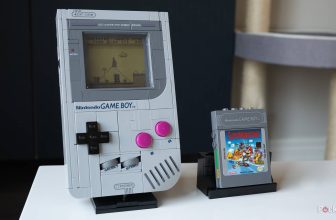-
- Brand
- Apple
- SoC
- A19 Pro 6-core CPU, 5-core GPU
- Display
- 6.5-inch 2736 x 1260 pixel resolution Super Retina XDR display
- RAM
- N/A
- Storage
- 256GB, 512GB, 1TB
- Ports
- USB-C (supports USB 2)
The super thin iPhone Air is just 5.6mm thick and features a single 48-megapixel camera lens. Its display comes in at 6.5-inches with supports for ProMotion 120Hz, and its front and back features ceramic shield construction.
-

- Brand
- Samsung
- SoC
- Octa-core Snapdragon 8 Elite (3nm)
- Display
- 6.7-inch 3120 x 1440 pixel resolution QHD+ Dynamic AMOLED2X
- RAM
- 12GB
- Storage
- 256GB / 512GB
- Battery
- 3,900 mAh
Samsung’s Galaxy S25 Edge features a thin design and a rear-facing dual-camera array with an f/1.7 200-megapixel wide and f/2.2 12-megapixel ultrawide shooter.
At its “Awe dropping” keynote event on September 9, Apple unveiled the iPhone 17 series, including the iPhone 17, iPhone 17 Pro, iPhone 17 Pro Max, and a new member of the iPhone family: the iPhone Air.
For months, rumors and leaks suggested that Apple would release an ultra-slim flagship phone this year, long referred to as the iPhone 17 Air. For its official launch, Apple decided to keep the name simple with iPhone Air, borrowing the ‘Air’ moniker from its lineup of slim iPads and MacBooks.
The iPhone Air is the thinnest iPhone Apple has ever produced, with Apple CEO Tim Cook describing it as “pro performance in a thin and light design.” However, the iPhone Air isn’t the only ultra-thin smartphone debuting this year. In May, Samsung launched the Galaxy S25 Edge, its interpretation of what a slim smartphone can be.
Let’s take a close look at the main differences between the iPhone Air and Galaxy S25 Edge, including specs, pricing, availability, design, and more.
Price, specs, and availability
-
Apple iPhone 17 Air Samsung Galaxy S25 Edge Brand Apple Samsung SoC A19 Pro 6-core CPU, 5-core GPU Octa-core Snapdragon 8 Elite (3nm) Display 6.5-inch 2736 x 1260 pixel resolution Super Retina XDR display 6.7-inch 3120 x 1440 pixel resolution QHD+ Dynamic AMOLED2X RAM N/A 12GB Storage 256GB, 512GB, 1TB 256GB / 512GB Ports USB-C (supports USB 2) USB-C Front camera f/1.9 18-megapixel (Center Stage) f/2.2 12-megapixel Rear camera f/1.7 48-megapixel f/2.2 12-megapixel (Ultra Wide) f/1.7 200-megapixel (Wide) Dimensions 6.1 x 2.9 x 0.22-inches (156 x 74.7 x 5.64mm) 0.26 x 2.99 x 0.23-inches (158.2 x 75.6 x 5.8mm) Colors Sky Blue, Light Gold, Cloud White, Space Black Titanium Black, Titanium Silver Weight 5.82oz (165g) 5.7oz (163g) Charge speed MagSafe wireless charging up to 20W with 30W adapter or higher 25W Super Fast Charging FastWireless Charging 2.0 Wireless PowerShare
The Galaxy S25 Edge was released in May 2025, starting at $1,100 for the 256GB model. It features a 6.7-inch Dynamic AMOLED 2X display with an adaptive 120Hz refresh rate, and is available in 256GB and 512GB storage options. The S25 Edge comes in three colors: titanium icy blue, titanium jetblack, and titanium silver.
The iPhone Air will be available for pre-order starting September 12 and will launch on September 19. The 256GB model starts at $1,000, which is $100 less than the S25 Edge, and it features a slightly smaller 6.5-inch Super Retina XDR display, with a ProMotion 120Hz refresh rate, and is available in 256GB, 512GB, and 1TB storage options. The iPhone Air comes in four colors: sky blue, light gold, cloud white, and space black.
Design and build
Thin is the name of the game
One thing the iPhone Air and Galaxy S25 Edge share is their extremely slim designs. Both phones are noticeably thinner than their Pro and Ultra counterparts, and they’re also much lighter. If you ignore the camera bumps, the iPhone Air is an impressive 5.6mm thick, while the S25 Edge is 5.8mm thick, making the iPhone Air just a bit thinner.
For some perspective, the iPhone 17 Pro is 8.75mm thick, and the S25 Ultra is 8.2mm thick, making the thinner size of the iPhone Air and S25 Edge quite remarkable. The iPhone Air is the thinnest iPhone ever made, surpassing the iPhone 6, and the Galaxy S25 Edge is the thinnest Galaxy S Series device ever produced.
Looking at the front of the phones, there isn’t much difference from what we’re used to. The iPhone Air’s display looks similar to other iPhone models with Dynamic Island, and the S25 Edge resembles the rest of the Galaxy S25 series with its hole-punch camera cutout.
Where the two really differ is the rear. The S25 Edge features a straightforward dual vertical camera setup, while the iPhone Air has a larger camera bar that stretches across the back of the device, which Apple calls its “camera plateau.” Both phones have a titanium frame. For protection, the iPhone Air uses Ceramic Shield 2 on both the front and back, which Apple claims is three times more scratch-resistant, while the S25 Edge has Corning Gorilla Glass Victus 2 on the back and Corning Gorilla Glass Ceramic 2 on the front display, both offering substantial protection. So if you’re concerned about dropping either device, both are well-shielded.
Regarding weight, the iPhone Air measures 5.82 ounces (165 grams), while the S25 Edge is slightly lighter at 5.75 ounces (163 grams). It’s also worth noting that the iPhone Air is only compatible with eSIM worldwide, whereas the S25 Edge supports both eSIM and a physical SIM card.
Display
The iPhone Air’s display is smaller, but brighter
The displays on the iPhone Air and S25 Edge have a few notable differences. The Galaxy S25 Edge features a 6.7-inch Dynamic AMOLED 2X display with a 3120 x 1440 pixel resolution at 513 ppi (pixels per inch), a 120Hz adaptive refresh rate, and peak brightness of 2,600 nits.
In contrast, the iPhone Air sports a 6.5-inch Super Retina XDR OLED display with a 2736 x 1260 pixel resolution at 460 ppi. It supports ProMotion, Apple’s adaptive refresh rate technology, which offers up to a 120Hz refresh rate. Although the iPhone Air’s display is slightly smaller than the S25 Edge’s, it compensates by being much brighter, reaching up to 3,000 nits of peak brightness, and featuring an anti-reflective coating — something the S25 Edge lacks.
Therefore, while the S25 Edge has a slightly larger screen, the iPhone Air’s is brighter and easier to see outdoors.
Internals
Both are powerful, but battery-life differs
Under the hood, the iPhone Air and Galaxy S25 Edge are very different. While the iPhone Air is powered by Apple’s A19 Pro chipset, the Galaxy S25 Edge is equipped with Qualcomm’s Snapdragon 8 Elite chipset.
The Snapdragon 8 Elite chipset has been around for almost a year, and it’s clear that it delivers outstanding performance. Since the iPhone Air hasn’t been released yet, I can’t do a direct comparison here. Instead, let’s look at last year’s A18 Pro to get a sense of what performance might look like. Overall, the Snapdragon 8 Elite tends to outperform the A18 Pro in multi-core Geekbench 6 benchmarks. However, the A18 Pro has a slight edge over the Snapdragon 8 Elite in single-core performance. Without getting into a detailed numbers game, I think it’s fair to say that both the Snapdragon 8 Elite and the upcoming A19 Pro are very powerful chipsets, and you can’t go wrong with either one. Both will offer a smooth experience no matter what you’re doing.
When it comes to battery life, the S25 Edge features a 3,900mAh battery, which Samsung claims can last up to 24 hours of video playback. Apple hasn’t shared the exact battery size of the iPhone Air, but it’s estimated to be around 2,800mAh. As with Apple devices, though, don’t be too concerned about the smaller battery size — iPhones often have smaller batteries than Androids, but they make up for it with superior software and hardware optimization. According to Apple, the iPhone Air can last up to 27 hours of video playback.
Cameras
What sets the iPhone Air and the Galaxy S25 Edge apart from the iPhone 17 Pro and the Galaxy S25 Ultra is their camera setup. While the iPhone 17 Pro features a triple 48-megapixel Fusion camera system, and the S25 Ultra boasts a quad-camera arrangement led by a 200-megapixel main sensor, the iPhone Air and the S25 Edge have fewer cameras due to their thinner design.
The Galaxy S25 Edge has two rear cameras: a f/1.7 200-megapixel main lens and a f/2.2 12-megapixel ultra-wide. It doesn’t have the S25 Ultra’s 10-megapixel 3x telephoto lens or the 50-megapixel 5x telephoto. Its ultra-wide camera, which is 12 megapixels, isn’t as large as the 50-megapixel ultra-wide on the S25 Ultra either.
Looking at the iPhone Air, it features only one rear camera, a f/1.6 48-megapixel Fusion main camera. So compared to the iPhone 17 Pro, it lacks a 48-megapixel ultra-wide and 48-megapixel telephoto. Where the S25 Edge has the advantage over the iPhone Air is its 12-megapixel ultra-wide camera, as the iPhone Air lacks an ultra-wide lens altogether.
One area where the iPhone Air excels is in its selfie camera, thanks to an 18-megapixel Center Stage front camera that’s also found in the entire iPhone 17 lineup. Unlike the S25 Edge’s 12-megapixel front camera, the iPhone Air’s Center Stage camera can adjust its field of view automatically based on the number of people in your selfie, and it can even switch between portrait and landscape modes without needing to move the phone.
Verdict: Should you get the iPhone Air or the Galaxy S25 Edge?
The iPhone Air is $100 cheaper and is thinner
The iPhone Air and the Galaxy S25 Edge are both technological marvels. They both pack impressive hardware into a lightweight, slim titanium chassis and feature stunning displays. Which one is right for you depends on your preferences.
If you’re considering trying an ultra-slim smartphone this year, one key advantage the iPhone Air has over the Galaxy S25 Edge is price. The 256GB iPhone Air starts at $1,000, while the 256GB Galaxy S25 Edge begins at $1,100. So, if saving money is important to you, the iPhone Air is the better choice.
Design-wise, it comes down to personal taste, but I find the iPhone Air’s design much more visually appealing than the Galaxy S25 Edge. It’s slightly thinner and stands out, and I personally don’t mind the camera plateau that protrudes from the back, although others may have very different opinions. Another factor in your decision is whether you prefer Android or iOS. If you’re already integrated into the Apple ecosystem with AirPods, a Mac, or an Apple Watch, then the iPhone Air is clearly the better choice.
While the iPhone Air’s display is slightly smaller than the S25 Edge’s, I believe its brighter screen and anti-reflective coating make it much more appealing. I prefer a phone that’s brighter and easier to see outdoors rather than one that’s only 0.2 inches larger. Considering that, along with the design and performance, I think the iPhone Air might be the better choice here. However, if you’re a big Android fan and value the openness and customization it offers, the S25 Edge could seem more attractive to you, which is understandable.
The iPhone Air starts at $1,000 for the 256GB model. If you want to be one of the first to get your hands on one, it will be available for pre-order starting on September 12 at 5AM PST/8AM EST, with the phone shipping September 19. The Galaxy S25 Edge is already available, and you can pick it up starting at $1,100.
Trending Products

Wireless Keyboard and Mouse Combo, ...

Lenovo New 15.6″ Laptop, Inte...

Dell Inspiron 15 3520 15.6″ F...

Acer Nitro KG241Y Sbiip 23.8” Ful...

Wireless Keyboard and Mouse Combo, ...

Zalman i3 NEO ATX Mid Tower Gaming ...

GAMDIAS ATX Mid Tower Gaming Comput...

Sceptre Curved 24-inch Gaming Monit...

Acer SH242Y Ebmihx 23.8″ FHD ...














